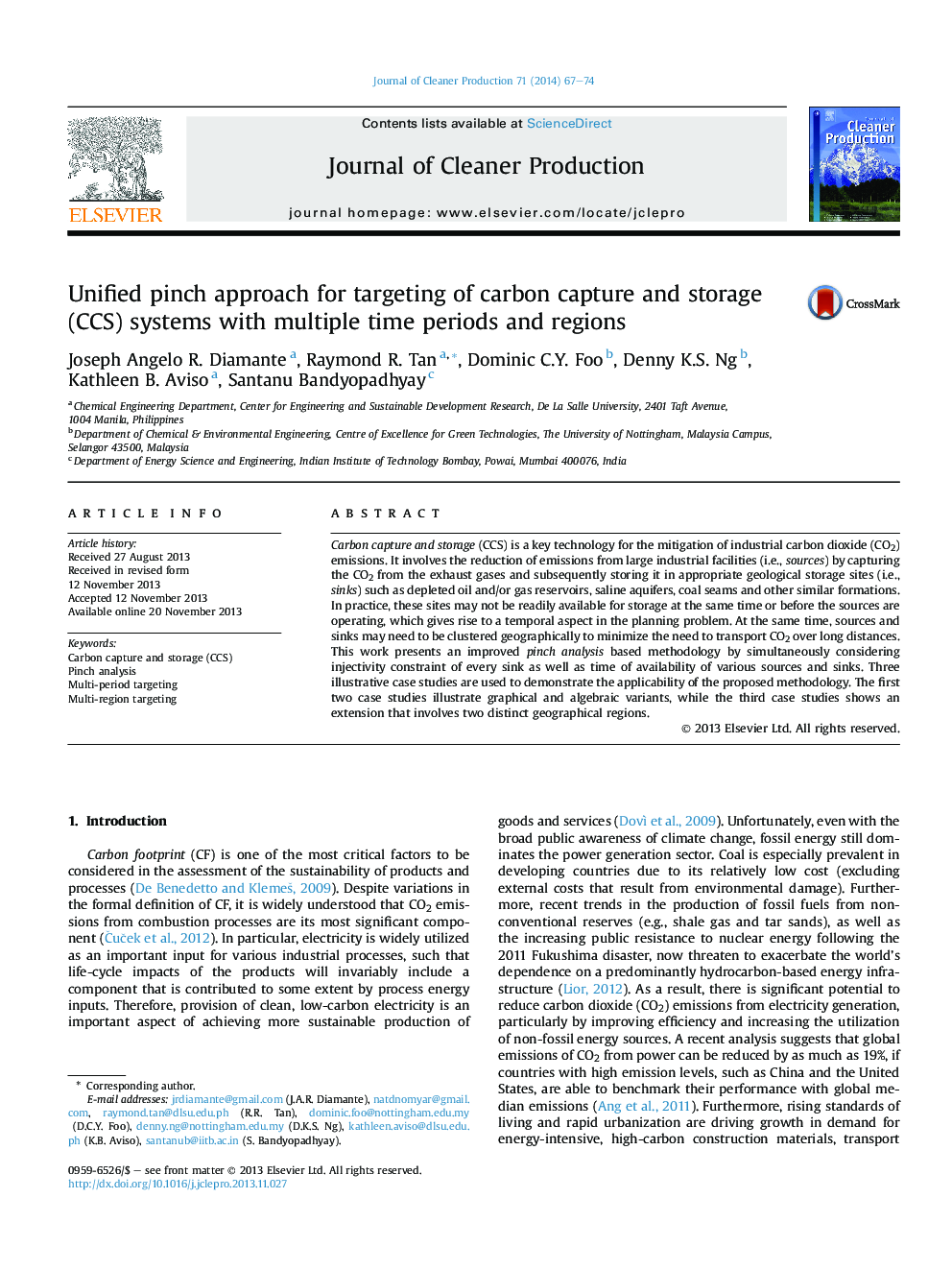| Article ID | Journal | Published Year | Pages | File Type |
|---|---|---|---|---|
| 1744920 | Journal of Cleaner Production | 2014 | 8 Pages |
Carbon capture and storage (CCS) is a key technology for the mitigation of industrial carbon dioxide (CO2) emissions. It involves the reduction of emissions from large industrial facilities (i.e., sources) by capturing the CO2 from the exhaust gases and subsequently storing it in appropriate geological storage sites (i.e., sinks) such as depleted oil and/or gas reservoirs, saline aquifers, coal seams and other similar formations. In practice, these sites may not be readily available for storage at the same time or before the sources are operating, which gives rise to a temporal aspect in the planning problem. At the same time, sources and sinks may need to be clustered geographically to minimize the need to transport CO2 over long distances. This work presents an improved pinch analysis based methodology by simultaneously considering injectivity constraint of every sink as well as time of availability of various sources and sinks. Three illustrative case studies are used to demonstrate the applicability of the proposed methodology. The first two case studies illustrate graphical and algebraic variants, while the third case studies shows an extension that involves two distinct geographical regions.
